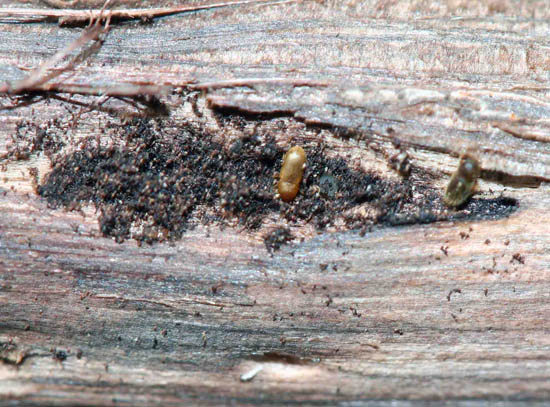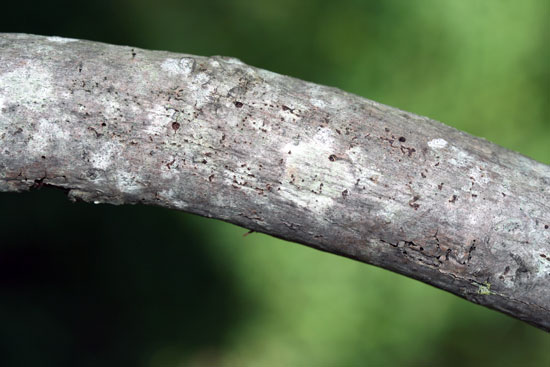Issue 16, September 10, 2010
Walnut Twig Beetle
Many cankers of thousand cankers disease on black walnut contain tunnels of walnut twig beetle, Pityophthorus juglandis, on their surface. The walnut twig beetle is a bark beetle, Family Scolytidae, that is very tiny, only about one and one-half millimeters long (one-twentieth of an inch long). To the unaided eye, these beetles look like fine pepper, being dark brown. Other than their small size, walnut twig beetles are similar in appearance to other bark beetles with deflexed heads hidden by the large hood-like pronotum and the posterior of the beetle being squared off. Walnut twig beetles have four to six transverse rows of tubercles on the pronotum.

Walnut twig beetle adults on thousand cankers of black walnut.
Walnut twig beetle larvae are similar in appearance to those of other bark beetles, being white, legless, and somewhat C-shaped. Fully grown larvae are much larger than the adults, being about three-sixteenths-inch long. Walnut twig beetle tunnels are found not only in cankers but also meandering in the cambium under the bark. There are two generations of walnut twig beetles per year. Adults overwinter under the bark, emerging in April to lay eggs for the first generation. Larvae take four to six weeks to develop under the bark, emerging as adults to lay eggs for a second generation. Adults emerge through tiny holes that they chew in the bark.

Walnut twig beetle emergence holes in black walnut.
Walnut twig beetles are not found without thousand cankers disease. It is unlikely that a bark beetle as small as walnut twig beetle flies very far, so that type of spread should be very slow. Movement is much quicker by people transporting logs and firewood. Additional information can be found in this Colorado State University pest alert (Adobe PDF).--Phil Nixon
Author:
Phil Nixon